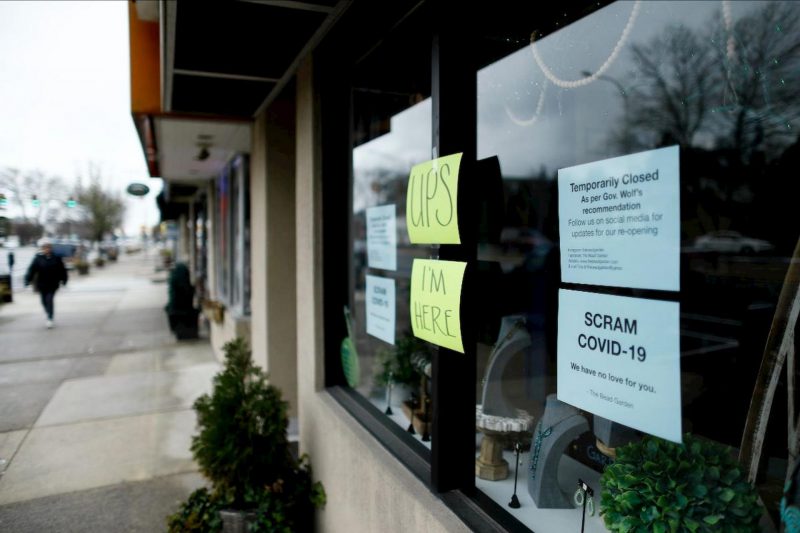
“The main issue is the uncertainty about how long the pandemic is going to last.”
Charles Thompson/PennLive
(Harrisburg) — The coronavirus contraction came fast and hard, forcing shutdowns of large segments of the American economy.
COVID-19 cases in the United States ticked past the 139,000 mark Sunday, more than in any other nation, and more than 2,400 deaths across the country have been linked to the virus. That’s the fast-moving public health toll.
But at least 200 million people nationwide have also been ordered to stay home as part of efforts to stop the spread, and early returns suggest that the first wave of economic victims of that combination punch are many of the economy’s low-wage and hourly workers — those who can least afford it.
They are the waiters and waitresses at your now-closed favorite restaurant. Construction workers whose job sites are shut down. Substitute teachers and teacher’s aides who — because they’re now employees of third-party providers — don’t have the same paycheck guarantees as regular school teachers during the COVID-19 school closures. Staff at most non-grocery retailers.
You can see their shadows in the darkened storefronts and empty parking lots that surround most businesses and entertainment venues across the state.
You can see it in the growing counts at places like Project SHARE in Carlisle, where Chief Executive Officer Bob Weed said his staff counted a 10 to 15 percent uptick in the number of families seeking food distributions this week.
And you can see it in the soaring numbers of applicants for unemployment benefits; a record 3.3 million Americans applied through the week ending March 21, the U.S. Labor Department said Thursday. More than 500,000 of them were Pennsylvanians.
Daniel Alpert, an economist and managing partner of Westwood Capital LLC, told PennLive this week he won’t be surprised if the pandemic throws at least 10 to 12 million workers out of work, enough to cause the national unemployment rate to soar to levels last seen during the so-called Great Recession of 2007-08, if not higher.
Three quick case studies show why.
Andy Lee owns and operates two restaurants in the Lehigh Valley, both of which have had to close under Gov. Tom Wolf’s mandated closure of all of the state’s roughly 10,000 liquor licensees on March 17.
For Lee, that meant laying off 52 people – all but two of his full-time employees and two servers to run curbside take-out service from his Braveheart Highland Pub in Hellertown. It’s doing about one-tenth of his regular volume, Lee says.
“We were having the best year of our lives, to be honest, but it’s gone,” Lee told PennLive this week.
Jeannette Reeves saw her small business – an in-home day care center in Harrisburg – come to a screeching halt, too. With most of her clients now working from home, she’s lost her kids and her family’s main source of income. And as a recent cancer patient with a weakened immune system, she’s not eager to take new families on right away.
The Reeves are living off of their savings now, “so there’s no spending unless it’s necessary,” Reeves said this week. “And whatever we have at home, that’s what we’re doing.”
In Cumberland County, Dave Cross of Mowery Construction has not laid off any of his 90 employees yet. But with most of his work sites shuttered — the firm did receive a state waiver to continue work at a distribution center in the Scranton area for a medical equipment firm — he’s not sure how long that will last.
“We’re honestly looking at it week by week,” Cross said Friday.
The dead stop facing all three of these companies — and thousands like them across the American economy — shows you exactly why economists know we’re in an economic contraction, and may be headed for a recession.
“The main issue is the uncertainty about how long the pandemic is going to last,” said Yeva Nersisyan, an associate professor of economics at Franklin & Marshall College in Lancaster. “How long is the economy going to be closed?”
Contraction or recession, there is a growing consensus on who is first in the path of this viral wrecking ball, and it is generally people in lower-wage, hourly positions who have the thinnest of financial cushions to fall back on.
Alpert is part of a team that has developed a research tool called the U.S. Private Sector Job Quality Index. They recently released an advisory list identifying 35 million jobs in 40 business sectors that, the authors feel, are “particularly vulnerable to cessation of economic activity due to the spreading pandemic” and the shelter-in-place recommendations that have followed.
Many of these businesses are loaded with front-line, customer-facing jobs that offer both low hourly wages – defined as less than the $802 weekly average for all production and non-supervisory jobs – and a limited number of hours of work per week. (For context, JQI has identified about 59.5 million such jobs across the total economy, with an average annual salary of about $28,000; some, like grocery and pharmacy clerks, are being hailed as heroes of the present moment, and have been rewarded with short-term pay boosts.)



